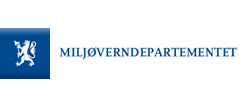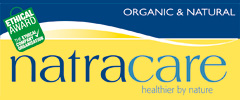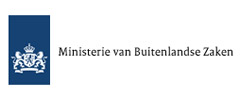Astonishing Findings of a New Research on Chemical Pesticides in Armenia by WECF Partner AWHHE
A research conducted in 2011 by WECF Armenian partner AWHHE revealed a threatening extent of toxic pesticides in more than 60 samples such as water, soil, air, cow’s milk and egg
02.02.2012 |WECF

Read the article below
Please visit Chemicals and Health for information on WECF activities in this field.
Also, read:
Pesticides waste dumps and dilapidated warehouses, containing more than 1,000-1,500 tons of pesticides, inherited from the Soviet Union in Armenia, are like time bombs which have already essentially damaged the environment.
Czech Arnika Association and Armenian Women for Health and Healthy Environment NGO (AWHHE) carried out a research in 2011 and found out that the samples of soil, air, water, cow’s milk, egg and 57 other samples taken from the territory near the old warehouses of expired pesticides, contain DDT (dichlorodiphenyltrichloroethane) and other concentration of chemical pesticides, which exceed by several times the marginal permissible amount.
(DDT, a chemical pest-killer, used in agriculture, was banned in Armenia in 1970s, because it can be accumulated in tissues of live organisms, particularly in rings of the food chain.)
“It’s a pity to find out that, for example, fish farms and pantries are located near the pesticides warehouses, and children walk about there. The torn pesticides sacks were scattered in the dilapidated building, which has no roof. So, the pesticides could have been spread through wind, could have been seeped into the soil through rain water and eventually penetrate into the environment,” says Suzan Honzaykova, a participant of the research, a postgraduate of the Institute of Chemical Technology in Czech Republic.
The Ministry of Agriculture of Armenia considers fish breeding to be one of its priority branches (about 500-600 tons of fish are exported from Armenia annually), but environmentalists warn that some of the fish are bred under the threat of being poisoned with pesticides, and that urgent measures must be taken.
The research was done in five hot spots – Nubarashen pesticides waste dump, former warehouses of pesticides in the village of Jrarat, Armavir province, Echmiadzin and Masis, and waste dump of copper production in Alaverdi. Concerns were raised over Jrarat, Echmiadzin and Masis warehouses.
‘Constantine and Sisters’ fish breeding basins, which are the third in Armavir province with their size and fish breeding capacity, are located only 200 meters from the ‘Haygyughkimia’ (ArmVillageChemistry) pesticides warehouse in Jrarat village.
Grigor Grigoryan, founding director of the fish breeding farm also owns the ‘Haygyughkimia’ pesticides warehouse, where Honzaykova carried out research and found that it contains at least 50 percent DDT.
According to the research, “the concentration of DDT and other stable organic chemicals (which derived from DDT) in the silt taken from the fish breeding farm, which is about 50 meters from the dilapidated warehouse, was too high.”
It was also learned that “the water which flows into the fish breeding basins contain DDX (DDD, DDE and DDT together) concentrations, which exceed the marginal permissible amount defined by the European Union for surface water.”
The European specialists say the pesticides need to be re-contained and the warehouse restored.
Director of the warehouse Grigoryan calls the research “nonsense” and a “needless fuss”.
“Here is the research done by the Center for Ecological-Noosphere Studies at the National Academy of Sciences, which distinctly says that the amount of organic chemicals found in the meat of fish that we breed in our basins do not exceed the accepted norms,” Grigoryan told ArmeniaNow.
Lilik Simonyan, Head of AWHHE Department of Hygiene and Ecological Risks, believes that the examination of the fish is authentic, however the threat has not been removed yet.
As the research states “the high concentration of DDT which was found inside the ruined building caused substantial air pollution; the concentration of DDX is 600 times higher.”
“This means that the threat still exists. I have not been there after our research, my entrance there is banned: the director said if I go there then he will break my leg. However the Ministry of Agriculture said that the warehouse had been renovated,” Simonyan told ArmeniaNow.
The DDX concentration in the samples of chicken eggs taken from villagers living some 100 meters from the warehouses is twice higher (than the permissible amount).
Despite the alarming problem, representatives of the Waste Research Center SNCO (of the Ministry of Nature Protection), founded in 2005 to examine the issue of pesticides and find solutions, are not even aware of the warehouses in Jrarat.
“I do not know, we have not dealt with that issue, we have no connection with it,” head of the Waste Research Center SNCO Suren Aslikyan told ArmeniaNow.
Karine Yesayan, Head Plant Cultivation and Plant Protection Agency of the Ministry of Agriculture, is aware of the issue, and she says that “solutions have been applied.”
“We have examined and researched the warehouse in Jrarat, too, and the pesticides sacks have been removed from there and taken to a closed area, and there is no threat of leakage,” Yesayan says.
According to her data, there are about 1,000-1,500 tons of banned or expired pesticides throughout the territory of Armenia.
Unlike Jrarat where the problem is somehow in the center of attention, then the warehouse in Masis remains dilapidated, with no roof, polluting the nearby residences and gardens.
The level of DDT pollution even on external walls of the pesticide warehouse is twice higher than the accepted norm in Armenia; whereas the high quality wheat seeds imported from Russia to Armenia were kept in a room adjacent to this warehouse last year.
The pesticides warehouse in Echmiadzin is also dangerous, as the authors of the research warn that “the fish breeding pool located some 50 meters from the warehouse is badly polluted with DDT.”
“The [usage of] DDT has been banned since 1970s, however, it continues to threaten our life seriously. The issue of these warehouses should not be settled temporarily as it has been done in case of Nubarashen waste dump, but it is rather necessary to find a means of their full demolition, otherwise it will be simply impossible to prevent the poisoning of air, soil, food and the whole future generations,” says expert Simonyan.
Related News
Getting to the Future We Want
4-7 November, Brussels: European Environmental Bureau’s (EEB) Annual Conference
12.11.2018
Human Biomonitoring for Europe
Vienna, 26 September: stakeholder forum
28.09.2018
A life without plastic, wouldn't it be fantastic?!
Interview with Charlotte Schueler of @PlastikfreiLeben, who lives a zerowaste life in Munich, Germany and shares her experiences to her 25.2 thousand followers on instagram & 37.2 thousand followers on facebook
14.09.2018
Calling for periods free from plastic & hazardous chemicals
Letter to Frédérique Ries, MEP, European Parliament on behalf of the #BreakFreeFromPlastics movement
04.09.2018






































